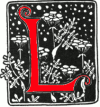
ittle is known for sure about Zoffany Graham Oldfield. However, it is fair to assume that he was a descendant of the artist John Zoffany, whose grand-daughter married into the Oldfield family. Genealogical sources show that the birth of a child of that name was registered in December 1870 in Watford, Hertfordshire. A boy with the same unusual name is then listed as having been a pupil at University College School (1880-86), and after that this name appears in issues of The Bookseller, indicating that Oldfield was in partnership with, first, Edgar Albert Nye (in an 1898 issue), and then William Fernandez Stone (in 1900), as a printer and stationer or bookseller, in Berwick St, off Oxford Street, in London.

Oldfield illustrated several books at the end of the Victorian period and early in the twentieth century, including: a collection of fairytales entitled The Edge of the World, from the Unicorn Press, London (1896); The Light That Came and other Dreamings, by Joseph Dawson, also from the Unicorn Press (1897); The Complete "Mystery of Edwin Drood" by Charles Dickens, as concluded by W[alter] E. Crisp (Chapman and Hall, 1912); and The Lays of the Pharisee, with "46 Full-Page Illustrations by Zoffany Oldfield" (J. Mulvy Ouseley & Son, 1913).
The illustrations were generally well received. For example. in advertisements for The Light That Came, placed at the end of Joseph Dawson's Lectures and Sermons of Peter Mackenzie (1898), a reviewer in the Dundee Courier is quoted as saying that "a number of quaint illustrations by Zofanny Oldfield enhance a book which is in every sense beautiful"; another reviewer quoted here, this time from The Scotsman, also describes The Light That Came as "well illustrated" (unnumbered pages). Oldfield's work for the same book was appreciated by a reviewer in the Publishers' Circular as well, but not without some reservation: "The illustrations by Zofanny Oldfield are good, although this artist is apt to keep to a certain stereotyped style" (35). J. Cuming Walters, reviewing the continuation of Edwin Drood, was more wholehearted: he found Oldfield's new illustrations for it "clever ... deserving of special commendation" and altogether a "further inducement for me to read the new volume" (238). Present readers might find the illustrations as skilful, particularly in the use of perspective, and as having a certain period charm because of the details (a a Gothic window, say, or an ornamented mantelpiece). But the figures do sometimes seem rather wooden, especially compared with Fildes' illustrations for the authentic part of the text. — Jacqueline Banerjee
Works
Bibliography
Alphabetical and Chronological Register for 1831-1891. London: University College School, 1892 (see p.211). Google Books. Limited view.
Crisp, Walter E.
Dawson, Rev. Joseph. Lectures and Sermons of Peter Mackenzie. London: Charles H. Kelly, 1898. Google Books, free ebook.
Dickens, Charles, and W.E.C. (Walter E. Crisp). The Mystery of Edwin Drood, ed. Mary L.C. Grant. New text drawings by Zoffany Oldfield. London: J. M. Ouseley, 9 John Street, Adelphi, 1914.
Manners, Victoria, and G. C. Williamson. John Zoffany, R. A., His Life and Works, 1735-1810. London; New York: John Lane, 1920. Internet Archive, contributed by the Getty Research Institute. Web. 28 August 2025.
"Reviews." The Publishers' Circular, Vol. 66 (9 January 1897): 32-35. Google Books, free ebook.
Walters, J. Cuming. "Edwin Drood Continued." Dickensian Vol. 10, No. 9 (September 1914): 238-241. Internet Archive. Web. 28 August 2025.
Created 28 August 2025